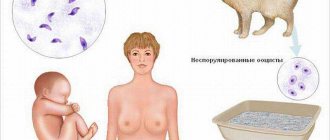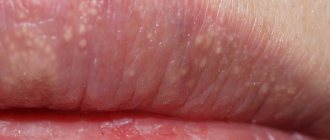What is the cause of elevated temperature after chemotherapy?
An increase in temperature within 7–10 days after finishing chemotherapy is a reason to immediately consult a doctor. Fever in this case is not a sign of a banal ARVI, it is a much more serious condition.
Most chemotherapy drugs suppress the bone marrow, which produces blood cells. Therefore, a person’s level of leukocytes (which protect us from infections), red blood cells (and with them hemoglobin) and platelets decreases. First of all, the problem arises with leukocytes. If there are very few of them, this condition is called “leukopenia” or “neutropenia”. If, following the leukocytes, the number of red blood cells and platelets greatly decreases, then we are talking about a more serious condition - pancytopenia.
With leukopenia and pancytopenia, a person is very vulnerable to any infection (bacteria, viruses, fungi and protozoa). Some of them could live in the human body for a long time, without leading to any pathological processes, but due to the weakening of the immune system, they can become the cause of a dangerous infectious disease (pneumonia, pyelonephritis, sepsis, etc.). Even a slightly elevated body temperature may indicate the beginning of this process, or may indicate that there is no infection yet, but blood counts have reached an extremely low level. Along with the fever, weakness and often a sore throat occur, which indicates an additional fungal infection.
Whether this condition develops or not depends on many factors, including the type of chemotherapy and the age of the patient (pancytopenia occurs more often in older people).
What is temperature and its features
The human body is a heterogeneous physical environment, where zones cool and heat up in completely different ways. Contrary to popular belief, measuring the indicator in the armpit is the least informative method. This is most often the cause of incorrect results. In addition to the armpit, it is possible to measure your body temperature in the ear canal and rectum. And also in the oral cavity.
In the field of medicine, there are several types of temperature. It will be elevated if the indicator is 37.5, at the same time other unpleasant symptoms begin to appear. That is why, if the body temperature jumps from 36 to 37 in an adult, this will not indicate any pathological condition. There is no reason to worry.
Fever is usually called a temperature of unknown origin, when the only symptom is a prolonged rise in temperature from 38 degrees. This condition lasts from 2 weeks or more.
Subfebrile is considered to be the indicator at which the temperature is up to 38.3 degrees. This condition is of unknown origin. In this case, a person’s temperature periodically increases without any additional symptoms.
Low-grade fever with Covid-19
Concept
This is an increase in its values up to 37°C and their preservation for a certain time. Low-grade fever occurs during most infections and is their most common manifestation.
Causes
It appears when Covid-19 does not develop quickly and at lightning speed, but proceeds within acceptable limits.
Such temperature values are the most acceptable for the body’s optimal fight against SARS-CoV-2, which is trying to force healthy cells to work according to their own program.
Flow
When the temperature reaches 37°C, patients tolerate it quite easily compared to the conditions that arise when it rises to 38°C and above.
The most unpleasant manifestation accompanying low-grade fever is weakness, but its degree of manifestation can be quite simply reduced.
Provoking factors
As mentioned earlier, body temperature jumps from 36 to 37 in an adult, mainly in the evening before bedtime. Or in the morning when he wakes up. In some cases, temperature fluctuations may occur throughout the day. What are the reasons? What does it mean if your body temperature jumps from 36 to 37? These include:
- Too intense physical activity.
- Prolonged exposure to heat or direct sunlight.
- Digesting food after a hearty and hearty lunch.
- Emotional excitement or nervous shock.
With the above conditions, even in a healthy and resilient person, the temperature can rise to 37 degrees. This is a low-grade fever. If your body temperature jumps from 36 to 37 degrees in such situations, then there is no reason to worry. To do this, you just need to rest, lie down in the shade, step away from excitement and stress, and try to relax.
You need to sound the alarm if the temperature jumps from 36 to 37 degrees, and at the same time symptoms of hyperthermia appear, which is a violation of the mechanisms of thermoregulation, which is accompanied by chest discomfort, dyspepsia, and headaches. In such a situation, you should definitely go to the hospital, since the provocateurs of this disease are often malfunctions of the endocrine glands, muscle dystonia and allergic reactions.
Symptoms of the inflammatory process
All these conditions are accompanied by a prolonged increase in temperature, weakness, and general malaise. After pneumonia, the patient is susceptible to infection with various infections, which can manifest themselves as symptoms of the inflammatory process:
- chills, weakness;
- cough;
- malaise, lethargy;
- decreased or lack of appetite;
- respiratory dysfunction;
- headache;
- aches in bones, joints;
- pain in the ears, trachea;
- runny nose;
- enlarged lymph nodes.
Reasons for women
Why does the temperature of the fair sex jump from 36 to 37 degrees? Most often, such sharp jumps are observed in women during pregnancy. This phenomenon is explained by the transformation of the entire hormonal background, in particular, an increase in the concentration of the female hormone progesterone in the blood. As a rule, during pregnancy, body temperature jumps from 36 to 37 degrees. In some cases, this figure can reach 37.3 degrees.
It should be noted that if a woman’s body temperature jumps from 36 to 37 due to pregnancy, this will not affect the patient’s well-being in any way. Mostly such jumps are observed during 2-3 months of pregnancy, when the body of the expectant mother gets used to the interesting position. However, it should be noted that some representatives of the fair sex experience jumps in body temperature from 36 to 37 degrees until childbirth.
Definition and general information
An indicator of the degree of heating of the air is its temperature. The nature of its change and distribution in the layers of the atmosphere is called the thermal regime. The main factor that determines its parameters is heat exchange between different layers of the atmosphere and the environment. The upper layers are heated rather weakly by solar radiation. The main source of increasing the temperature of the near-surface air layers is the heat generated when solar rays enter the lithosphere and hydrosphere.
Effect of latitude
At different latitudes, air masses heat up differently. The temperature value is determined by the angle of incidence of sunlight on the earth's surface in the study area. The more vertically they fall, the more they warm up the lower layers of the atmosphere. How does air temperature depend on latitude?
- In hot climate zones close to the equator (zero latitude), the lighting angle is close to 90°.
- As you move away from the equator towards the tropics, it decreases to 60°.
- The temperate latitude belt is characterized by an angle of incidence of rays in the range from 60 to 30°.
- In cold zones, its value continues to decrease down to 0° in the highest latitudes of the Arctic and Antarctic.
Thus, the higher the latitude, the lower the temperature. The angle of incidence of the sun's rays in a certain area can be found as follows: subtract the value of the latitude at which it is located from 90°. The temperature regime depends on the distance between the measurement point and sea level. Therefore, the statement is true: the air temperature changes with altitude, decreasing by one degree with an increase of one kilometer. This relationship is determined by two reasons:
- removal from the surface of the earth;
- decreasing the angle of incidence of sunlight.
The Earth rotates around the Sun, so during different periods of time (day, month, year) its surface is illuminated from different angles. In addition to solar radiation, the geography of air mass movements has a great influence on temperature values. For example, cold air from the Arctic will cause the temperature to drop, while warm air from the Gulf Stream will cause the temperature to rise.
Underlying surface
An important factor in understanding what air temperature depends on is the concept of the underlying surface. This is one of the internal climate-forming factors, including the relationship between the ocean and land in the area, its topography, and the structure of the active layer of the climatic zone. It affects the efficiency of radiation from the surface and the amount of heat spent on evaporation.
In addition, the type of surface plays an important role in the formation and movement of air masses. Air temperature varies differently over the water surface and over land.
Methods and units of measurement
The SI (Common International System of Units) unit of temperature is Kelvin. The beginning of the Kelvin scale coincides with absolute zero - the stopping point of all thermodynamic processes, which is considered unattainable. Water freezing on this scale begins at +273°K.
The most widely used temperature measurements are on the Celsius scale. The reference points for it were the temperatures of ice melting (0 °C) and water boiling (100 °C). In the USA, the Fahrenheit scale is most often used. The normal temperature of the human body corresponds to 96°F, and the “fiery” value required for paper to ignite is called the famous dystopian novel by Ray Bradbury “251 degrees Fahrenheit”.
Temperature data can be measured with different types of thermometers. For household measurements, liquid glass thermometers are used, in which the working fluid can be alcohol or mercury. For accurate meteorological measurements, the thermometer is placed in a special booth located at a height of two meters above the ground. The device must be in the shade , otherwise it will measure the temperature of the sun's rays and not the air.
To continuously measure and record the degree of heating of air masses, meteorologists use thermographs, the main element of which is a bimetallic thermometer.
When will it be dangerous?
We have already figured out that such jumps are not dangerous to the health of the expectant mother. However, such changes in body temperature from 36 to 37 degrees in some cases can still pose a danger to the health of the expectant mother. This will happen if a rash appears on the skin, pain in the abdomen, as well as difficulty urinating and other unpleasant symptoms. In this case, not the woman herself will suffer, but also her unborn baby.
That is why, at the slightest change in body temperature from 36 to 37 degrees, which is accompanied by malaise, you should consult your doctor.
Yearly and monthly changes
The change in temperature indicators by month is called the annual temperature variation and is characterized by the annual amplitude, i.e., the difference between the average temperature of the warmest month and the coldest.
A climate is called maritime if it is characterized by small annual temperature fluctuations. The large amplitude determines the continental climate. Thus, climate changes occur not only from the equator to the poles, but also along latitudes when moving away from the shores of the oceans inland.
The annual cycle is influenced by the latitude and continental location of geographical zones. An increase in altitude leads to a decrease in temperature fluctuations over the year. Determining the average long-term amplitude and time of onset of minimum and maximum temperatures allows us to distinguish four types of annual cycle:
- Equatorial type. It is characterized by two weakly expressed maximum temperature values - after the spring and autumn equinox, and two minimums - after the winter and summer solstice. The annual amplitude is small. Over the oceans about a degree, over the continents - up to 10 ° C.
- Tropical type. At latitudes related to it, a simple annual cycle predominates. Extreme values occur during the summer and winter solstices. The amplitude over the coasts is about 5°, and inside the continents it reaches 1–20 °C. Monsoon regions are characterized by a maximum before the summer monsoons, with the arrival of which the temperature decreases.
- Temperate zone type. The air in these latitudes warms up to its maximum and minimum about a month after the solstices. The continental climate is characterized by large fluctuations of 25-40 °C; in Asia they can reach up to 60 °C. For sea temperatures it is 10-15 °C. It includes several subtypes - temperate, subtropical and subpolar.
- Polar type. In the Northern Hemisphere, the maximum temperature occurs in July, in the Southern Hemisphere - in January. The minimum occurs before the appearance of the Sun after the polar night. Has a wide amplitude range even over the ocean surface.
The topic of temperature change is very important for determining meteorological conditions in each of the geographical zones of the earth's surface. The climate temperature norm is the average value calculated over a thirty-year period. When tracking weather, statistical values such as deviations from the norm or anomalies per day, month, season or year are used for clarity.
Ovulation
A sharp jump in body temperature is often observed during ovulation in the fair sex. During this period, the absolute norm is indicators from 36.9 and 37 to 37.3. In addition to temperature fluctuations, symptoms of ovulation will include the following:
- Powerlessness and weakness.
- Irritability and nervousness.
- Pain in the lower abdomen.
- A good appetite.
- Swelling.
As a rule, by the time menstruation arrives, the above symptoms disappear, and the temperature no longer jumps. In addition to the fact that a woman’s temperature fluctuates during this period, her general condition may worsen, which will not be considered a pathology. In this case, there is no need to consult a doctor.
What if it's low?
Low body temperature after a viral infection is quite common and can last for several weeks. For some, this period lasts up to 2 months, as is the case with the “increasing” temperature tail.
Many people consider anything less than 36.6° to be a low temperature. This is not true, since thermometer readings can fluctuate depending on the time of day, food intake, women's monthly cycle and even mood.
Therefore, 35.5-37.0° are considered normal, and these numbers are normal for any person. Therefore, t≤35.4° will be low. This means that the body has not yet had time to recover and has lost strength in the fight against infection.
Menopause
We continue to consider why body temperature jumps from 36 to 37 degrees among representatives of the fair sex. Similar changes are often observed in women during menopause. This phenomenon occurs due to a sharp decrease in the concentration of sex hormones in the blood. Almost all women who enter menopause, in addition to changes in body temperature, experience the following symptoms:
- Excessive sweating.
- Hot flashes.
- High blood pressure.
- Minor disturbance in the functioning of the heart.
Temperature fluctuations during menopause are not dangerous to health. But if representatives of the fairer sex feel rather poorly, then they should go to the clinic. Most likely, the doctor will have to prescribe hormonal treatment to his patient.
Thermoneurosis
Why does the temperature still jump from 36 to 37 degrees? One possible cause is thermoneurosis. In this situation, the body can heat up even to 38 degrees. As a rule, such a pathology develops after severe stress and emotional shock. It will be very problematic to determine thermoneurosis in a patient. In most cases, to diagnose the disease, specialists perform an aspirin test, during which the patient is given an antipyretic drug, after which it is necessary to monitor how the intensity and frequency of temperature fluctuations change.
What conclusions does the specialist make? If after taking this medication the temperature drops to normal and does not rise within 40 minutes, then we can confidently say that the person is developing thermoneurosis. In such situations, the patient is prescribed restorative therapy.
What to do
If the temperature does not rise above 38°, then even with prolonged low-grade fever there is no need to “chop” the tail. The body will recover on its own, but it can and should be helped:
- drink more liquid - compotes, fruit drinks, herbal teas, mineral water, etc.;
- do not overexert yourself physically, but take more walks and exercise in the fresh air;
- sleep more - during sleep the body recovers best and fastest;
- eat well.
Taking antipyretics is undesirable, since it will interfere with the natural functioning of the immune system and increase the risk of developing VSD - vegetative-vascular dystonia. In addition, it will not be possible to get rid of the temperature tail in this way, and t will rise again.
If residual effects in the form of elevated temperature are associated with taking antibiotics, then stopping the fever in this case is not worth it, since the tail is just a side effect of the drugs.
The most common causes of fluctuations
A person’s temperature fluctuates from 36 to 37 degrees, most often due to some kind of disease. Sharp jumps can be provoked by the following pathologies:
- Heart attack.
- Tumors.
- Spread of infection.
- Inflammatory reactions.
- Purulent formations.
- Allergy.
- Injury to joints or bones.
- Dysfunction of the endocrine glands.
- Disorders of the hypothalamus.
- Autoimmune enemies.
If the temperature jumps from 36 degrees to 38 degrees, then this may be a symptom of tuberculosis. Doctors cannot yet explain exactly what causes this phenomenon, but they believe that the human body reacts to pathogenic bacteria in this way.
A person who suffers from tuberculosis experiences an increase or decrease in body temperature by several degrees throughout the day. In some cases, the fluctuations are so pronounced that a sweeping graph can be constructed from them. Such jumps are often observed in the case of the formation of purulent abscesses.
Why does the temperature remain after treatment for coronavirus infection?
At the start of the pandemic, the focus of doctors was solely on finding effective treatments. However, as the number of recovered people increased, new problems appeared - the search for means of rehabilitation during the recovery period, the study of the possible consequences of a dangerous pathogen remaining in the body. New questions have emerged that require answers and ways to eliminate negative symptoms. The problem of why the temperature persists after coronavirus is only one of those that needs immediate resolution.
Scientists are confident that its appearance is due to the specific structure of the new type of pathogen, its ability to communicate not only with lung tissue cells, but with any others that make up the parenchyma of vital organs. Damage to the heart, liver and kidneys leads to an increase in the degree of intoxication with viral toxins, disruption of usual functionality, and disruption of normal life processes.
Fact!
It has not yet been established in what time frame convalescence should be completed and how intensively positive dynamics should develop after recovery. There are only assumptions that the duration of temperature +37˚C after coronavirus is directly dependent on the form of the disease in the active period. Other reasons have not yet been reliably confirmed, although researchers have varying hypotheses for the manifestation of the symptom during recovery.
In the evenings
If a person’s temperature often jumps from 36 to 37 degrees in the evenings, this may indicate the development of chronic diseases. These include:
- Pharyngitis.
- Sinusitis.
- Pyelonephritis.
- Salpingo-oophoritis.
These pathologies are accompanied by very unpleasant symptoms, so you should not hesitate to treat them. The patient must undergo a medical examination at the clinic, after which, based on the tests, the specialist prescribes the most suitable medicine.
Principles of therapy
As is known, in order to prescribe optimal treatment, the cause of symptoms must be identified. If the temperature is elevated, the patient is examined.
When the diagnosis is confirmed, treatment should be prescribed directly based on the characteristics of the pathology. It can be:
- antibiotic therapy,
- antiviral agents,
- anti-inflammatory drugs,
- antihistamines,
- hormone therapy,
- general strengthening measures,
- antipyretic drugs.
An increase in temperature is a protective reaction that allows the body to effectively and quickly fight pathogenic elements.
The prescription of antipyretics is not justified if the temperature is up to 37 degrees. In most cases, antipyretic medications are prescribed at temperatures above 38 degrees.
Drinking plenty of warm fluids is also recommended, which increases sweating and promotes heat transfer. It is necessary to provide cool air in the room where the patient is. Thus, the patient’s body will have to warm the inhaled air, while giving off heat.
As a rule, thanks to the actions taken, the temperature drops by a degree, which means the patient’s well-being improves, especially with colds.
Endocrine glands
If a person’s body temperature fluctuates due to dysfunction of the endocrine glands, the patient will experience the following symptoms:
- Sudden change of mood.
- Loss of body weight.
- Irritability and nervousness.
- Cardiopalmus.
- Heart dysfunction.
If the described symptoms appear, you should definitely consult a doctor. To confirm the dysfunction of the endocrine glands in the body, the patient must also undergo an examination, which includes the following diagnostic procedures:
- General urine analysis.
- Biochemical and clinical blood tests.
- Blood test to determine the concentration of hormones in it.
- Electrocardiography.
- Ultrasound monitoring.
If the diagnosis is confirmed, the specialist prescribes optimal therapy for the patient.
Warning signs: when to be wary
If the temperature first returned to normal and then rose again above 38°, a relapse of the infection and the development of another disease cannot be ruled out. Such high rates are typical for:
- blood pathologies and oncology;
- parasitic infestations;
- allergies;
- pregnancy: in the early stages of gestation, low-grade fever is caused by hormonal changes and the introduction of a fertilized egg into the uterus.
To determine the true cause of fever, you should take a routine general blood test (CBC). With an increased ESR parameter - erythrocyte sedimentation rate - we can argue about the continuation of the inflammatory process.
With this result, the doctor recommends 1 of 3 options:
- replacing the drug if the patient receives medication support;
- taking antibiotics if a bacterial component is attached;
- additional examination.
Temperature tail after severe infectious diseases - for example, follicular tonsillitis - can last up to 3 weeks with t = 37-37.5°.
If the temperature remains at 38° for more than 4 days, it is necessary to do a computed tomography (CT) scan or x-ray to rule out pneumonia. You should pay attention to symptoms such as shortness of breath, difficulty breathing and non-productive cough.
How to get rid of jumps?
A change in body temperature in an adult is normal in most cases, but sometimes it will be a warning about the development of some pathological process in the human body. In order not to aggravate the whole situation, you should not engage in self-treatment at home; you must consult a qualified doctor. Only an experienced specialist is able to identify the exact cause of the temperature fluctuations that have occurred, after which he will prescribe the most appropriate treatment using medications. Therapy may include taking the following medications:
- Anti-inflammatory drugs.
- Antiallergic medications.
- Hormonal agents.
- Antibiotics.
- Antipyretic drugs.
- Antiviral medications.
Jumps in body temperature can also be considered a kind of protective reaction of the human body. But if there is a sluggish inflammatory process, then in most cases the readings do not rise above 37 degrees. On average, in this case, body temperature is 36.9 and 37. In such situations, people simply do not notice a slight increase, so for a long time patients do not even suspect that they have inflammation inside them. Antipyretic drugs are allowed to be used only if the body temperature has risen above 38 degrees. In case of a slight increase in indicators, the human body can completely independently overcome this or that disease.
Temperature tail
Not everyone's infections end without consequences. One of them is the so-called “temperature tail” - a steady increase in temperature to subfebrile values, observed after recovery.
The duration and severity of such a tail can vary, but it can be stated that it is a tail under one condition - if t does not rise above 38°. A high temperature that does not subside for a long time requires mandatory medical consultation and additional examination. Can a person have a fever after an illness? Yes, but t values and the presence/absence of any symptoms are important.
Prevention
If you don't want to deal with daily fluctuations in body temperature, you need to strengthen your immune system. To do this, you should adhere to the following preventive rules:
- You should lead a correct lifestyle.
- Every day you need to set aside a small amount of time for physical exercise.
- It is necessary to eat properly and balanced. You will have to eliminate all harmful foods from your diet.
- You should also stop drinking alcohol and smoking.
- Throughout the day, it is necessary to consume a sufficient amount of water, which is at least 2 liters per day.
- Experts recommend hardening the body.
- For prevention purposes, you should take vitamin complexes.
- Your daily diet should include fresh vegetables and fruits, as well as other foods that are rich in nutrients and vitamins.











